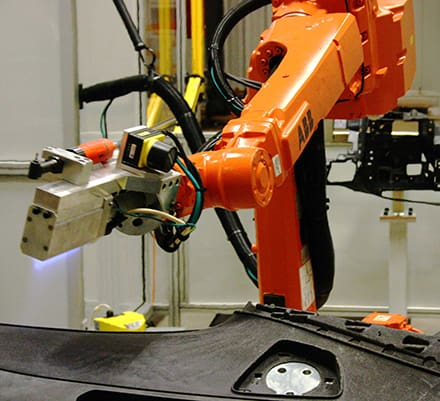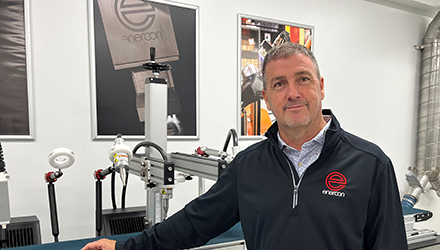Design Considerations for Implementing Adhesive Solutions using UV/LED Technologies
Markets for cured adhesives continue to expand as adhesive formulations, materials, & manufacturing processes evolve. In this paper, industry experts discuss the latest technology being used in medical, optics, plastics, and microelectronics for UV/LED cured adhesives. Learn how surface treatment is helping improve the strength of the adhesive and what the most suitable curing solution…
Read MoreEnercon Plasma & Flame Innovations Featured in Special Plastics Report
Plastics Machinery Magazine produced a special report on surface treatment. The publication targeted the most innovative developments in the marketplace and Enercon was pleased to be recognized extensively in two articles for our work in the field of plasma and flame surface treating. Enercon’s plasma and flame surface treating systems are used to clean, etch and functionalize…
Read MoreAutomation Improves Plasma & Flame Surface Treatment Productivity
The manufacturing of virtually everything from toothbrushes to auto parts can benefit from the use of atmospheric plasma treatment and flame treatment during assembly and decorating operations. These technologies increase material surface energy to promote bonding with inks, adhesives, paints and other coatings. Companies in the medical, automotive, packaging, consumer products, wire & cable, sporting goods, furniture, and others markets find that…
Read MoreImprove Label Adhesion on Bottles – Flame & Plasma Treaters
When packagers are faced with label adhesion challenges, flame and plasma surface treaters are often used to increase bond strength. Label adhesion problems on bottles occur because many of the container, lid and cap materials used in packaging are chemically inert and non receptive to bonding with glue. Options for improving labeling success include changing…
Read MoreWhat Plasma Actually Does to a Surface to Improve Adhesion
Air plasma surface treating is an emerging green technology for leading manufacturers tasked with assembling and decorating plastics, composites, glass and metals. It is a powerful, yet relatively inexpensive technology that is used by both Fortune 100 companies and small operations to improve bond strength, product quality and throughput. You can see the effects of…
Read MoreTop 3 Strategies to Improve Your Adhesive Bonding Operations
Production & design engineers are challenged with developing manufacturing processes that yield optimal results for quality and throughput. Since many do not fully understand the chemistry aspects of interfacial surface adhesion, they rely on conventional production methodologies, which ultimately undermines the repeatability of their success. In this new webinar, industry experts Wilson Lee (Enercon Industries)…
Read MoreImprove Adhesion in Window & Door Manufacturing Processes
Learn how plasma & flame surface treatment are used to efficiently create strong bonds for the assembly, painting and decorating of windows and doors. Discover how these technologies work, see examples of specific industry applications, and get insights from the application experts at Enercon. Plus, gain access to info on our new plasma treating nozzles which are…
Read MoreIs Plasma Treating the Missing Link in Your Adhesive Bonding Operations?
To enable adhesive bonding, manufacturers rely on primers, cleaners, chemical etching & mechanical roughening. However, these traditional surface preparation methods are notorious for limiting productivity & product quality for the following reasons: Use of in-line plasma & flame surface treating is on the rise because it solves these challenges by cleaning, etching & functionalizing surfaces…
Read MoreHow Automotive Manufacturers use Plasma & Flame to Improve Quality & Efficiency
Plasma & Flame surface treating technologies are helping suppliers in the automotive industry reduce cost, improve quality, and maximize production efficiencies. Projects for vehicle lightweighting, decorating, gasket sealing adhesion, and electrical potting are fueling the need for incorporating plasma and flame surface treaters. This 45-minute webinar provides insights on how treatment improves adhesion for assembling,…
Read MoreSee How Plasma & Flame Treatment Prepare Surfaces for Adhesion
LIVE DEMO REPLAYSee Enercon’s Wilson Lee conduct live demonstrations to display how atmospheric plasma and flame surface treating technologies improve surface energy for improved adhesion of inks, adhesives, & coatings. Topics include: Whether you’re new to surface treating or an industry veteran this presentation has something for everyone. Access to the webinar includes both the…
Read More










